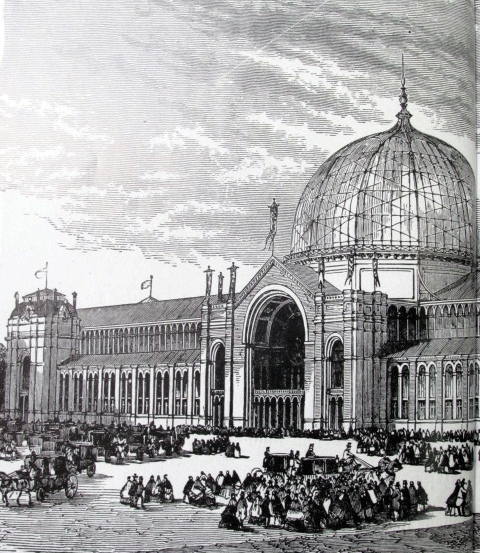The exhibition in Paris in 1855 clearly demonstrated that it is quite possible to repeat the show to the whole world. In turn, several small industrial exhibitions in Dublin, Manchester and Florence demonstrated technological development in certain industries in Europe. Since the time of 1851, heavy industry, in particular the steel industry, has achieved impressive results. The use of more economical and efficient steam engines in railways and ships made it possible to achieve great fuel economy. In the field of communications, telegraphs began their triumphal march, and photography received worldwide recognition as a graphic medium. Thus, it was time to demonstrate again to a large audience the technical progress achieved by the country in various fields.
Historical reference:
Official name: The London International Exhibition on Industry and Art of 1862
Duration: 1 May - 1 November 1862 (184 days)
Location: South Kensington
Area: 12.5 hectares
Classification: 4 sections, 40 classes
Organization: Royal Society of Arts, Manufactures and Trade, from 1861 Royal Commission
President: Earl Granville
Architect: Captain Francis Fowke
Number of participating countries: 36
Number of participants: 29,000
Visitors: 6,100,000
Costs: £ 458,842
Income: £ 459,632
The planning of the World Exhibition began in 1858 and it was due to pass in 1861. In a short time, the plan was considered in the leading industrial circles and interested the organizers of the exhibition in 1851. Territory in South Kensington was chosen venue for the exhibition, which was managed by the Royal Garden Society. After making a pledge of £ 250,000, the Royal Decree entered into force, giving the organizers official powers. The Bank of England, in turn, allocated a loan of £ 250,000 for the construction of the Palace of Industry.
In February 1861, Queen Victoria appointed a commission for the second exhibition of the industry of all nations in London. Her husband, Prince Albert, could not manage a new exhibition because of health problems, and Earl Granville who had already participated in the organization of the exhibition in 1851 was appointed President of the Commission.

Despite short terms, the Royal Commission withstood the schedule and on May 1, 1862, opened the second Industrial Exhibition in London. However, it should be noted that by this time the work on the building was still not finished and the exhibits were far from the correct location and consistent classification.
Having built the Palace of the exhibition in 1862, the organizers wanted to eclipse the Crystal Palace in 1851 in all respects. The author of the project was Captain Francis Fowke, an engineer and architect of the Government Department of Sciences and Arts. Since in the future the building was intended for fairs and industrial exhibitions, not only steel and glass were used here, as for the Crystal Palace.
In accordance with the taste of that time, the facade and the entrance were massive and decorated with sculptural groups. The building was erected in 12 months on 6.5 hectares of land. Its distinguishing features were two glass domes on metal frames, 49 meters in diameter.
Translated by Raushan MAKHMETZHANOVA
